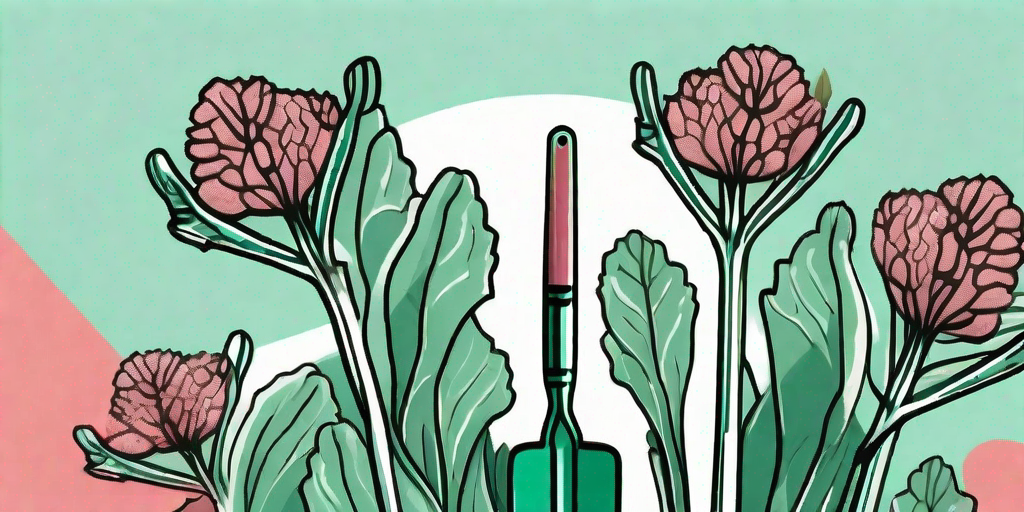
Welcome to the world of rhubarb, a vegetable that often masquerades as a fruit in our pies and desserts. This cheeky chameleon of the plant world is a delight to grow and even more fun to eat. But before you can start whipping up your grandma's famous rhubarb crumble, you need to know how to harvest it properly. Fear not, dear reader, for you've come to the right place. Let's dive into the vibrant world of rhubarb.
Understanding Rhubarb: The Basics
Before we get our hands dirty, let's get to know our subject a little better. Rhubarb, scientifically known as Rheum rhabarbarum, is a perennial plant with large leaves and fleshy stalks. The stalks are the only edible part of the plant, with the leaves being toxic due to high levels of oxalic acid. So remember, stalks good, leaves bad. Got it? Good.
Now, you might be wondering, "Why on earth would I want to grow a plant where I can only eat the stalks?" Well, my friend, that's because rhubarb stalks are delicious. They have a unique tart flavor that makes them perfect for pies, jams, and even some savory dishes. Plus, they're packed with vitamins and minerals, so you can feel good about indulging in that second slice of pie.
Planting and Growing Rhubarb
Now that we're all on the same page about why rhubarb is awesome, let's talk about how to grow it. Rhubarb is a hardy plant that can tolerate a wide range of climates, but it does best in regions with cool springs and summers. It's typically planted in early spring, but if you're a bit late to the game, don't worry. Rhubarb is forgiving and will still grow if planted later.
When it comes to choosing a spot for your rhubarb, think like a sunflower. Rhubarb loves the sun and needs at least six hours of sunlight each day. It also prefers well-drained soil, so avoid areas where water tends to pool. Once you've found the perfect spot, dig a hole about a foot deep and wide, place the rhubarb crown in the hole, and cover it with soil. And voila! You've planted your first rhubarb.
Harvesting Rhubarb: The Main Event
Alright, you've been patient, and now it's time for the main event: harvesting. The general rule of thumb is to wait until the second year after planting to start harvesting. I know, I know, it's a long time to wait, but trust me, it's worth it. Harvesting too early can weaken the plant and reduce future yields.
When the time finally comes to harvest, look for stalks that are at least 10 inches long. To harvest, simply grab the stalk at the base, twist, and pull. It should come away easily. Remember to leave at least two stalks per plant to ensure it continues to grow. And whatever you do, don't forget about the leaves. Remember, they're toxic, so be sure to remove and dispose of them safely.
Storing and Using Rhubarb
After harvesting, you'll want to use your rhubarb as soon as possible for the best flavor. But if you can't use it all right away, don't worry. Rhubarb can be stored in the refrigerator for up to two weeks. Just wrap the stalks in plastic and keep them in the crisper drawer.
If you still have more rhubarb than you know what to do with, consider freezing it. Simply chop the stalks into one-inch pieces, spread them out on a baking sheet, and freeze. Once frozen, transfer the pieces to a freezer bag or container. Now you can enjoy rhubarb all year long.
Frequently Asked Questions
Is Rhubarb a Fruit or a Vegetable?
Despite its frequent use in desserts, rhubarb is actually a vegetable. However, in the United States, it's legally considered a fruit. Confused? Don't worry, so is rhubarb.
Can I Eat Rhubarb Raw?
Yes, you can eat rhubarb raw, but it's very tart. Most people prefer to cook it with sugar to balance out the flavor.
Why Are My Rhubarb Stalks Green?
Rhubarb stalks can range in color from green to red. The color doesn't affect the taste or edibility of the stalks, so don't worry if your rhubarb isn't as red as you expected.
Conclusion
And there you have it, a comprehensive guide to harvesting the perfect rhubarb stalks. With a little patience and care, you'll be on your way to a bountiful harvest in no time. So go forth, plant, harvest, and most importantly, enjoy your rhubarb. After all, life's too short for bad pie.











